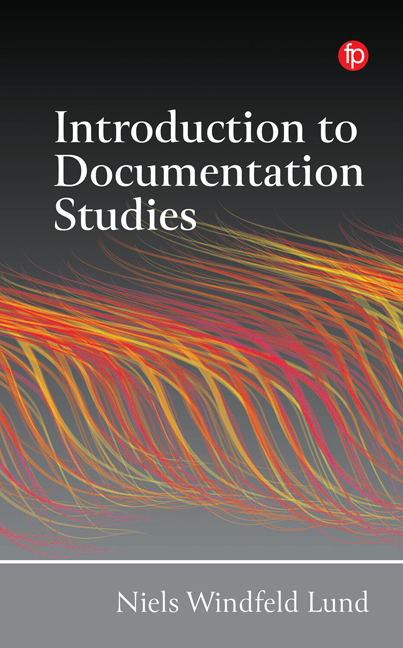 Introduction to Documentation Studies
Introduction to Documentation Studies 2 - A Complementary Theory of Documentation
Published online by Cambridge University Press: 28 March 2024
Summary
Introduction
The whole concept of complementarity is very much related to the work of Niels Bohr. He developed the concept to cope with the quantum theory and wrote:
The very nature of the quantum theory thus forces us to regard the space-time co-ordination and the claim of causality, the union of which characterizes the classical theories, as complementary but exclusive features of the description symbolizing the idealization of observation and definition respectively…. In fact here again we are not dealing with contradictory but with complementary pictures of the phenomena, which only together offer a natural generalization of the classical mode of description.
(Bohr, 1934, 54f)And:
From our present standpoint physics is to be regarded not so much as the study of something a priori given, but rather as the development of methods for ordering and surveying human experience.
(Bohr, 1987, 10)Even in the case of our immediate world and life, we can never arrive at the essence of life once and for all and understand what society and life is, but we can offer a number of descriptions from different angles, from complementary angles. Each angle requires its own distinctive experimental design, exclusively for that angle. In quantum mechanics, time and space are two complementary angles, while in our case I will suggest three different angles with their focus on materiality, mentality, and sociality. I cannot exclude that there might be a fourth or a fifth angle which could be relevant, but the three angles have been chosen based on a general understanding of the immediate human world.
I am not trying to make a complete synthesis but, rather, to make as full a description as possible by making a complete asynthesis, such that one will have not one single overarching synthesis but at least three ways of getting closer to a better and more complete understanding of the phenomenon which you are studying.
For example, we can study this book as a material phenomenon with pages made of paper with printed letters, etc. We can talk about book printing, book binding, typography, illustrations, and, not least, how new digital technology has had an impact on book printing and made it possible to make an e-book, without any paper, readable on a digital device.
Information
- Type
- Chapter
- Information
- Introduction to Documentation StudiesComplementary Studies of Documentation, Communication and Information, pp. 19 - 34Publisher: FacetPrint publication year: 2024